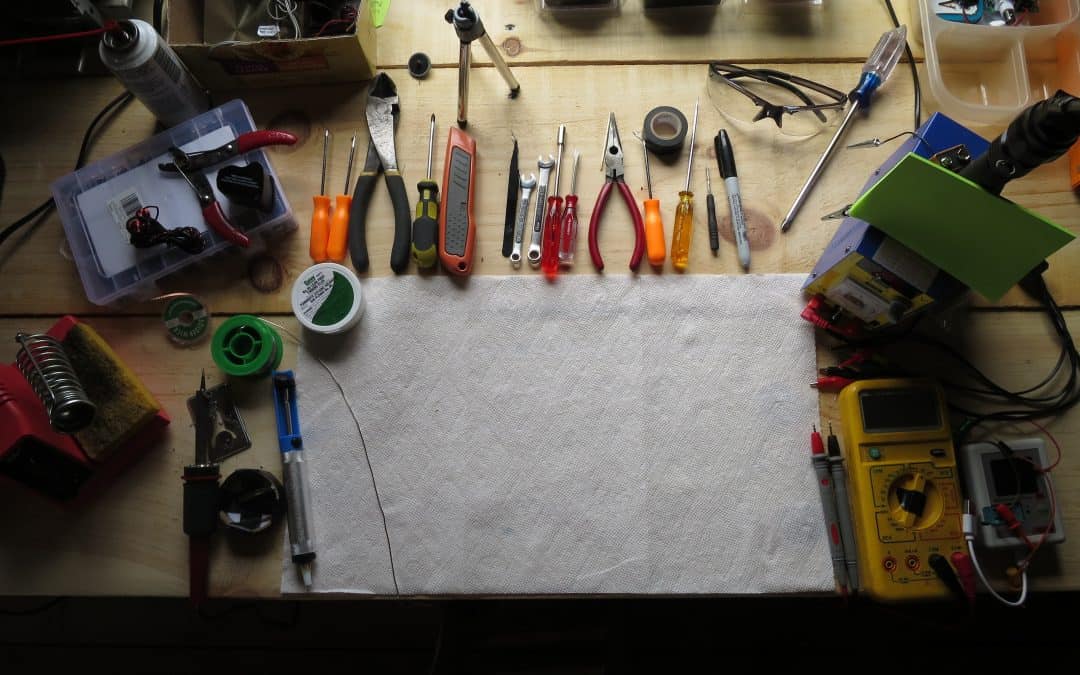Sometimes I get asked, “what’s on your workbench?” Here it is-
Weller WLC100 40 watt soldering Iron, the best tool on my bench. Made in North America with a lifetime guarantee. Most Weller Irons from the 60s are still in use today.
Random assortment of old hand tools, Most are around 20 years old, Pliers, dental picks, toothpicks, screwdrivers, tweezers, box cutter, etc.
Honeywell LED wall light, nice and bright doesn’t cause interference as a fluorescent light does.
Assortment of scrap boards and parts, Parts organized into 2 shelf organizers parts. Scrap boards from every brand. Parts like NPN & PNP Transistors, Resistors, Capacitors, transformers, antennas, switches, Variable capacitors, clips, wires, speakers, etc, etc. Enough to make a couple of Transistor radios from scratch.
Shop radio, good for using to test other radios, listen to while working, using as an amp (signal tracer), etc.
Tripod and camera, sometimes I like to record myself working so I can look back at it, cameras are also very useful for taking pictures of the circuit boards before I work on it.
Radio shack contact cleaner, a radio repairman’s WD-40, I lubricate all switches and VC pots before I get started on any radio.
Schematic folder, Of Riders, Sams, and Beitmans servicing info I get the schematic on every radio I work on, then I put it in one big folder to use again.
Very large assortment of screws, most of them from scrapped radios, in case a radio I am working on is missing a screw.
Bench power supply, no-name brand, this style works up to 15 volts and is available on eBay.
UEI multimeter and other testing equipment, my multimeter works great, they aren’t sold anywhere anymore except eBay but they are expensive. I also have a Chinese component testing deceive which is very helpful. Along with signal tracers, transistor testers, etc.
Notepad and writing utensils, I use a sharpie to make the polarity on the circuit board when doing a recap and Write down what servicing I am doing for customers on their radio.
Organizing stuff, I like to use little plastic organizers for each radio and plastic bags for the screws and replaced parts. I also have wall hangers with little drawers that I keep components and stuff in. I label it all which makes it easy to find parts fast. A big part of radio restoring is staying organized.
I also have cleaning supplies, but that’s another story.
73, Henry

